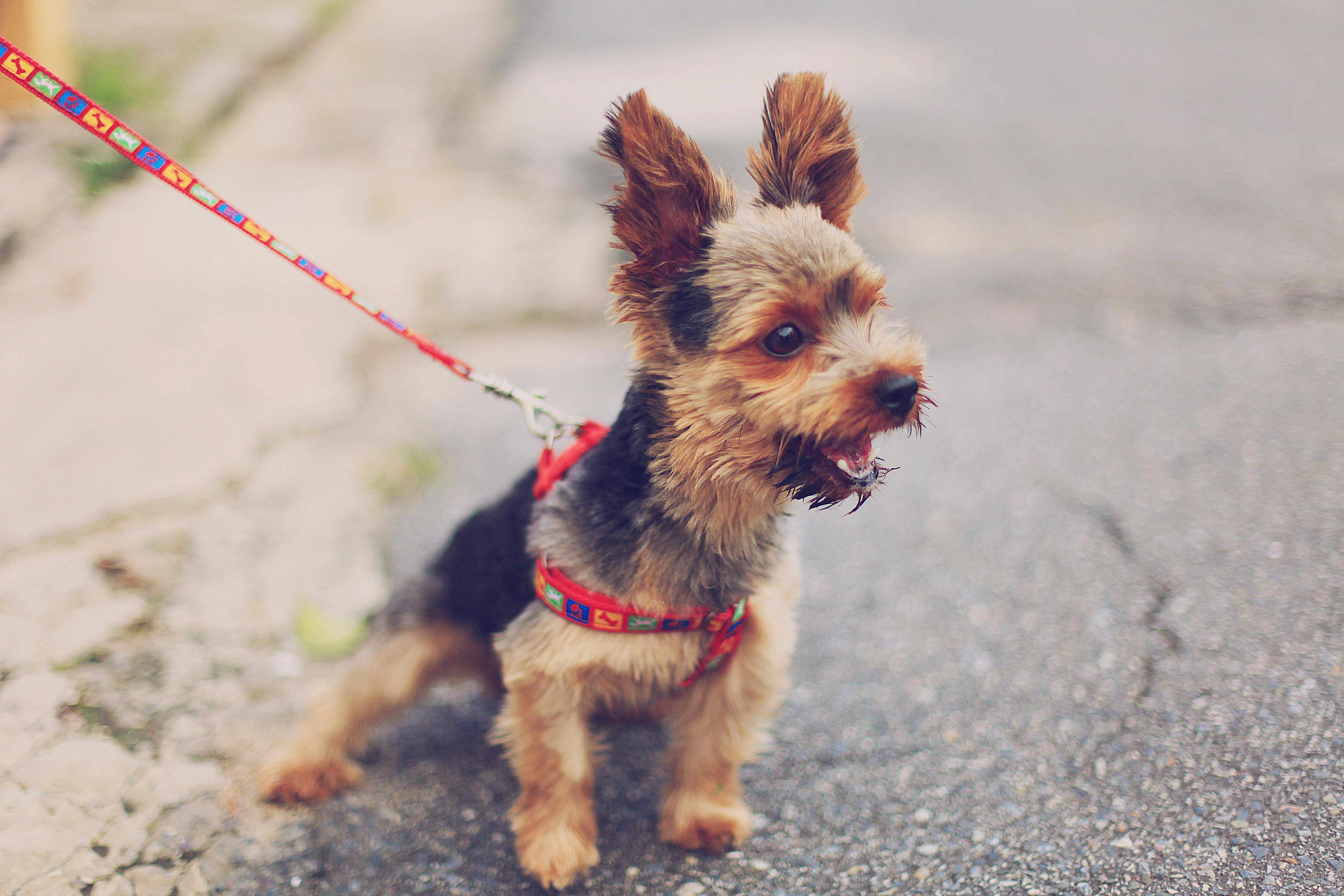
Written by Grace Park
Veterinary reviewed by:
Published: 05/06/2021, edited: 10/05/2022
Written By: Kinzie Keller, Wag!
When you think about bringing your new puppy home, there are some things that are and aren’t on the top of your list. Crate training, potty training and obedience training are usually the top 3 but what about desensitizing?
My dog's experience with fear & my learnings
In 2018, my 5-month old standard poodle puppy met something that scared him enough that he began to bark and growl at it. It wasn’t scary, though. It was just a lawn decoration! While I know that, he did not. I was able to safely and slowly introduce him to this new thing and help him recover from this fear within about 45 minutes. After positively and patiently introducing him, he was now desensitized to this scary new thing. I’m experienced with dogs, but what if I hadn’t been?
Fears and phobias are nothing new for dogs. They are natural instincts that should help them survive. That lawn decoration my dog was afraid of may have been small but it was shaped like a bear. That fear could have protected him, if it had been real.
More often than not, these fears our pups have aren’t rational. That’s where we as Pet Parents come in. It is our job to work with them, to show them that what they may perceive as scary or a threat is, in fact, safe. Sadly, many Pet Parents do not realize the importance of this and make fears worse.
What situations benefit from your dog's desensitization?
- Fireworks
- Thunderstorms
- New textures and surfaces
- Veterinary offices
- Introducing a new animal or person
- Being outside
- Leashes
- Touch
- Children
- Grooming
- And so much more
Certain things, like touch, are useful before introducing a dog to children. Children mishandling or riding on dogs often leads to bites. Educating children on how to interact with dogs is important but ensuring your dog can tolerate being pet the wrong way, having their legs touched, tail touched, ears tugged, etc, will create a sound dog. Desensitizing can help not only overcome fear but build confidence going forward.
How can you tell if your dog is fearful?
- Ears flattened to their head
- Licking their lips
- Excessive yawning
- Cowering
- Drooling
- Tail tucked
- Raised hair on the back of neck
- Avoiding eye contact
- Shaking
- Barking and growling
Watching your dog grow up - your dog's fear periods
As your dog grows, they will go through periodic stages of irrational fear (fear periods). They may have seen that figurine on your shelf since they came home but suddenly, it is terrifying. This stage is the most important time to build confidence, desensitize and help them overcome their fear.
How can you help your dog desensitize to the world around them?
- Start slow. With dogs, slow is fast. The slower you go, the more likely they are to retain what they’re being taught.
- Remain positive. This is key when trying to positively associate fear with your dog. Frustration on your part can set a training session back.
- Keep sessions short. If you see signs of stress, stop and remove yourself and your dog from the situation.
- Don’t be afraid of giving lots of treats! I recommend low-calorie treats for training sessions like Zukes!
- Reward your dog for small steps. With each positive interaction your dog has with their fear, give them a big reward and praise!
- Don't flood your dog with their fears. As previously mentioned, this can create a lifelong phobia
- Seek help if you need it! Don’t be afraid to reach out to a qualified trainer.
Desensitizing can be done at any age. Rescues especially can benefit from this. Every dog deserves to be confident and fear free!
Comments (1)
Helen
09/22/2024
My big dog panics and pulls when walking anywhere he is fearful of everything
Leave a comment
Related articles
About Wag!
© 2025 Wag Labs, Inc. All rights reserved.
About Wag!
© 2025 Wag Labs, Inc. All rights reserved.
Security
© 2025 Wag Labs, Inc. All rights reserved.